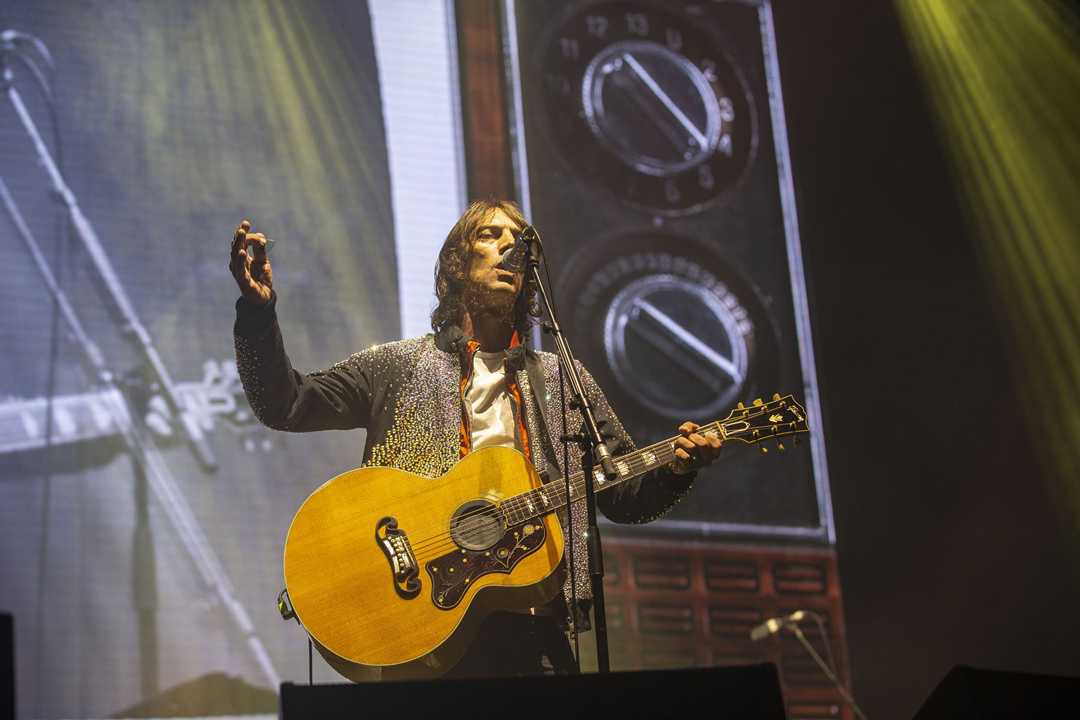Colour Sound finds the rebel in Richard Ashcroft
- Details

At the start of each touring project, Ashcroft will present Gaskell with a series of ideas. “He’s a demanding client but in a good way,” comments Gaskell. “He knows what he wants and what he doesn’t like, so that’s always an essential starting point, beyond that, he trusts me to come up with an appropriate design.”
For this leg of the tour they were playing several academies, theatre and town hall venues, culminating in London’s Olympia, so it was decided to bring video in just for the London show. For the other gigs, the visual emphasis was all on lighting.
Ashcroft originally only wanted Johnny to use variations of white light, but he managed to persuade him of the creative benefits of sneak in the odd bit of blue or red primary here and there!
It’s always been an edgy, stark look onstage, with Ashcroft preferring the emphasis to be on the music rather than himself, and to be lit by shadows, silhouettes and the margins and subtleties of negative luminance.
Given those specifics, any lighting also must have the capacity to go huge for the big anthemic numbers.
“I chose the fixtures for flexibility and to produce the multiple textures and layering needed to make the show look good on an academy stage right up to Olympia,” explains Gaskell. “As always, H and the team at Colour Sound did a fantastic job in supplying everything I needed on budget.”
The format was a straightforward front and back truss plus a floor package.
The front truss was rigged with blinders and Claypaky Stormy LED strobes for the effects, together with eight Robe BMFL Spots for the key lighting and six Robe Spiiders for the stage washes that could also swing out to the audience and do big sweeps and statements when needed.
Gaskell likes to keep the key lighting localised and obvious, so Ashcroft had a choice of pools of light or dark spaces to move in and out of as the mood takes him, a technique he’s devised through working with him over time.
The back truss featured more Claypaky Stormys, some 2-lite Moles, six Robe MegaPointes and six Spiider LED wash beams.
On the floor, there were six Stormy units upstage in a line at the back, six 2-lites on a metre-high scaff barrels just below the bottom edge of the video screen and another six Spiiders, also upstage beneath the screen primarily used for silhouetting.
On the downstage edges were two additional Spiiders a side for extra coverage across the mic line.
The Colour Sound BT6 video screen installed for the London show measured 40ft wide by 25 high and was an impressive addition to the visuals, supplied complete with a robo cam package from Colour Sound (on the tour they utilised a backdrop with the album over artwork).
For the Olympia show, the video playback was co-ordinated by Toby Vogel using a Resolume server, and the robo cams were operated by Colour Sound’s Ed Blackwell. The robo cams were positioned along the front of the stage on stands and the resulting IMAG footage was highly effective.
Jonny operated the lighting using his own ChamSys control set up. His lighting crew from Colour Sound were James Hind and Simon Robertson for the tour, and for Olympia, Ed was joined on the video crew by Jani Fodor.
(Jim Evans)
















